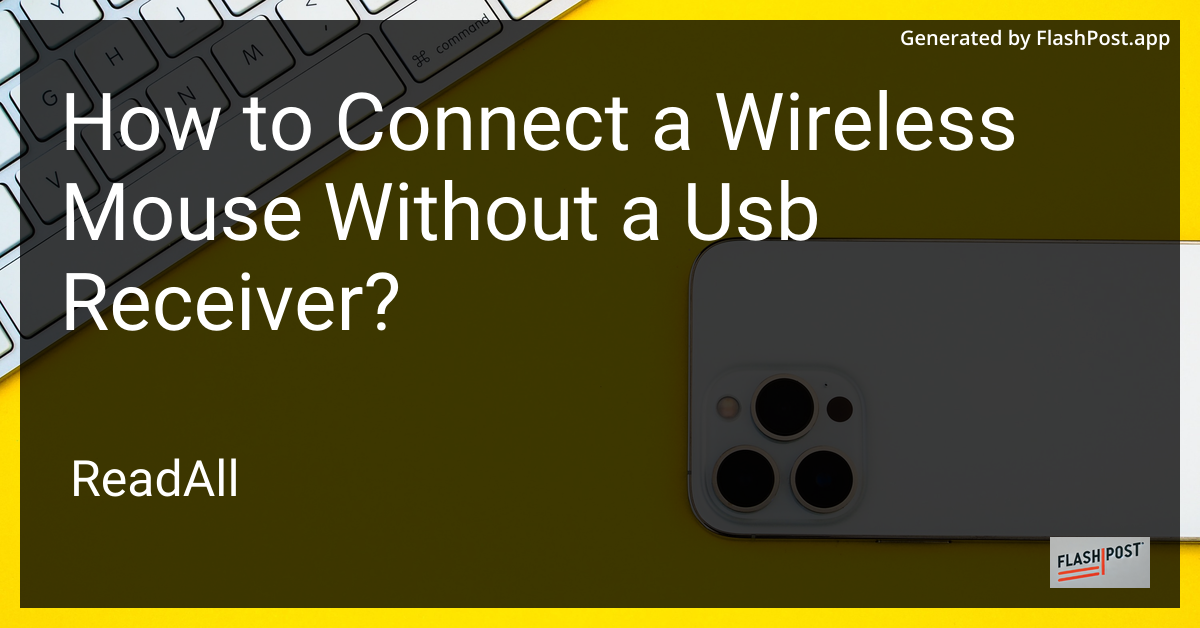
In today's wireless age, convenience and ease of use are key. One major benefit of a wireless mouse is the freedom from cords, allowing for a cleaner workspace and greater mobility. However, a common hassle can occur when you lose or break the USB receiver. Fret not! This guide will walk you through how to connect a wireless mouse without a USB receiver.
Why Go Wireless?
Before diving in, it's important to understand the advantages of a wireless mouse. The primary benefit is the absence of cords, which provides a neater desk setup and allows for freedom of movement. Whether gaming, working, or browsing, a wireless mouse offers flexibility that traditional wired mice cannot.
Connecting a Wireless Mouse via Bluetooth
Many modern wireless mice come equipped with Bluetooth functionality that can be a lifesaver if you’ve misplaced your USB receiver. Here’s how to connect your wireless mouse to your computer through Bluetooth:
-
Check Bluetooth Compatibility: Ensure your computer has Bluetooth capability. Most laptops have it built-in, whereas desktops might require a Bluetooth adapter.
-
Turn on Your Mouse: Before starting, make sure your wireless mouse is turned on. It often involves flipping a switch at the bottom of the mouse.
-
Enable Pairing Mode: Put your wireless mouse into pairing mode. This usually requires holding down a button or combination of buttons on the mouse until a light starts blinking. Refer to your mouse’s manual for specific instructions.
-
Access Bluetooth Settings: On your computer, go to the Bluetooth settings. You can typically find this in your system settings menu.
-
Search for Devices: Click on the option to search for nearby Bluetooth devices. Your mouse should appear in the list.
-
Pair the Devices: Select your mouse from the list and initiate the pairing process. You might need to confirm the pairing on your computer or mouse.
Alternative Solutions without Bluetooth
Using a Different Computer
Try connecting your wireless mouse to another computer that is Bluetooth-capable. This step helps determine if the issue lies with your original computer.
Replacement USB Receivers
While this guide focuses on connecting without a USB receiver, consider ordering a replacement from the mouse manufacturer. Some newer models even offer universally compatible receivers.
Wired Alternatives
Sometimes practicality demands a wired solution. Discover which wired gaming mouse has the best sensor to make an informed purchase if returning to wired technology.
Troubleshooting Tips
- Battery Check: Always check the battery level of your wireless mouse. A dead battery yields no connection.
- Range Matters: Ensure your mouse is within the effective range to your computer's Bluetooth signal.
- Reboot Your Device: Restart your computer to reset the Bluetooth settings.
Conclusion
Losing a USB receiver does not spell the end for your wireless mouse. With Bluetooth capabilities or a quick online purchase of a replacement receiver, you'll be back to enjoying the benefits of a wireless mouse in no time. For those interested in technical functionalities like automated clicks, you might want to explore mouse click scripting.
Continue enjoying the seamless experience of a cable-free workspace!